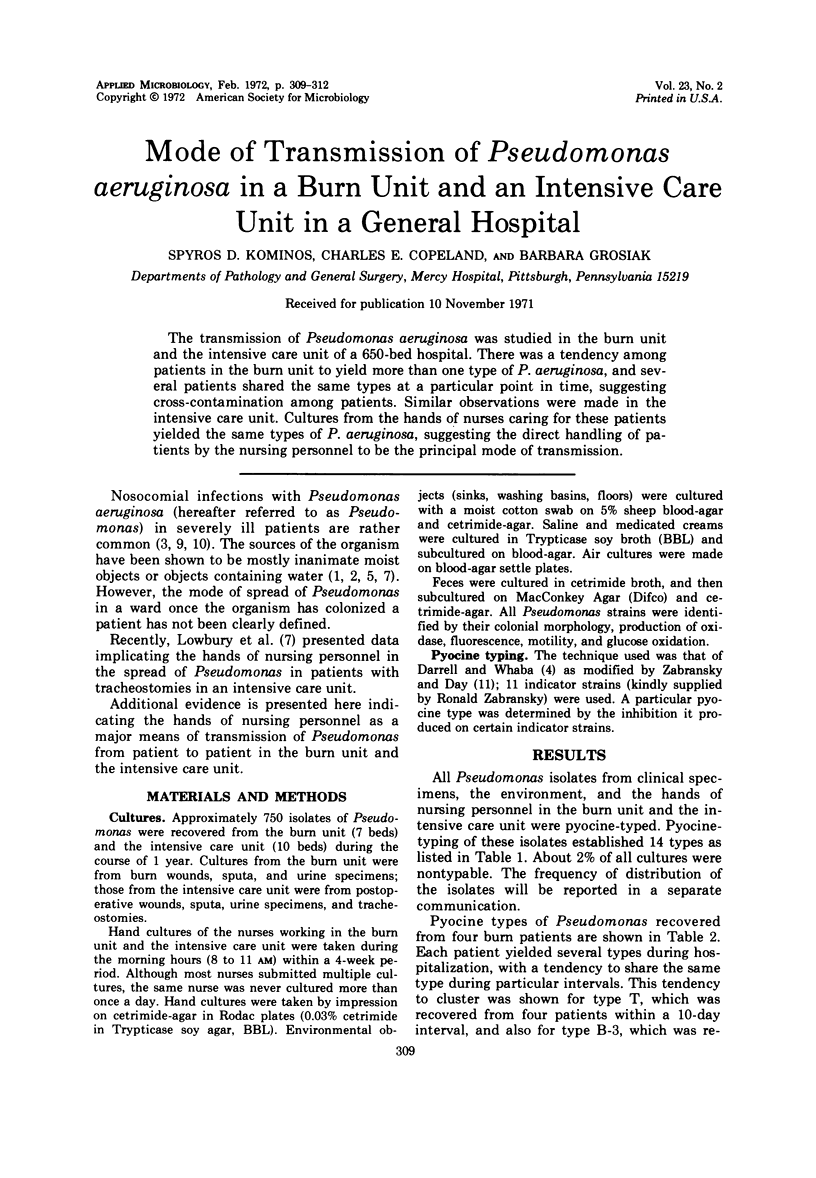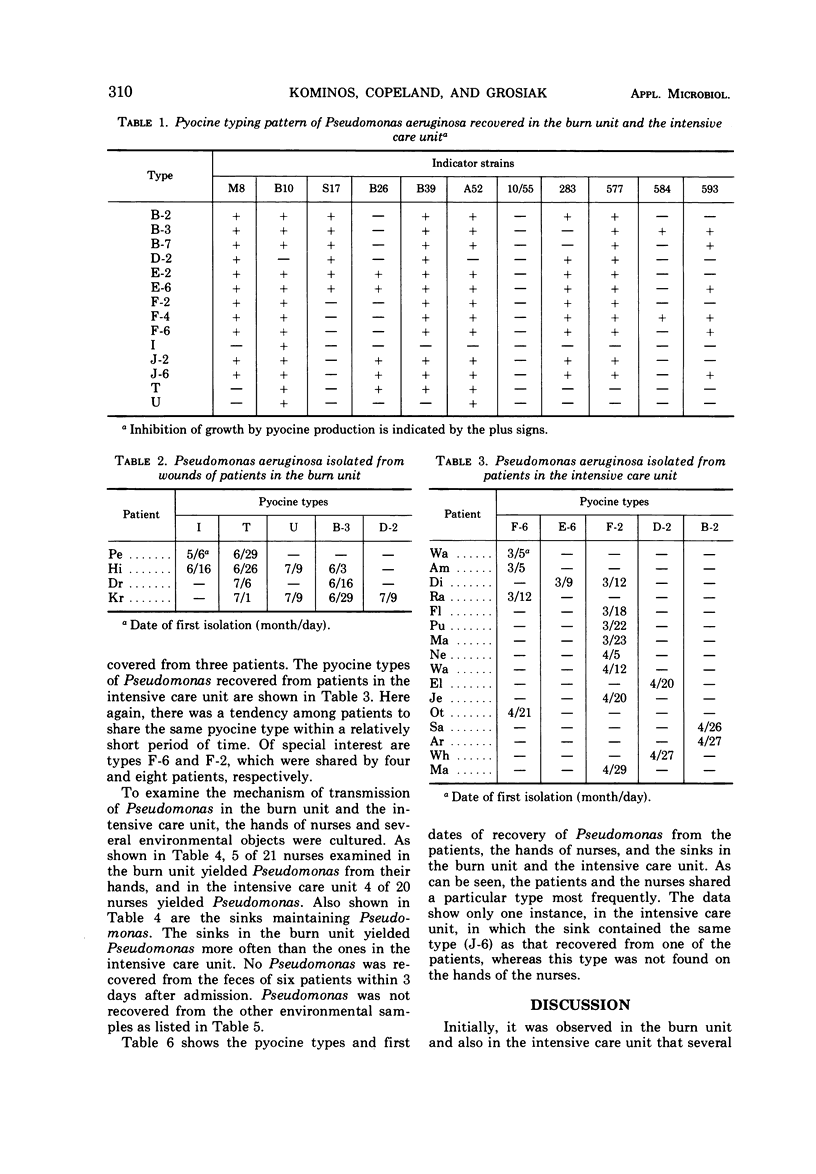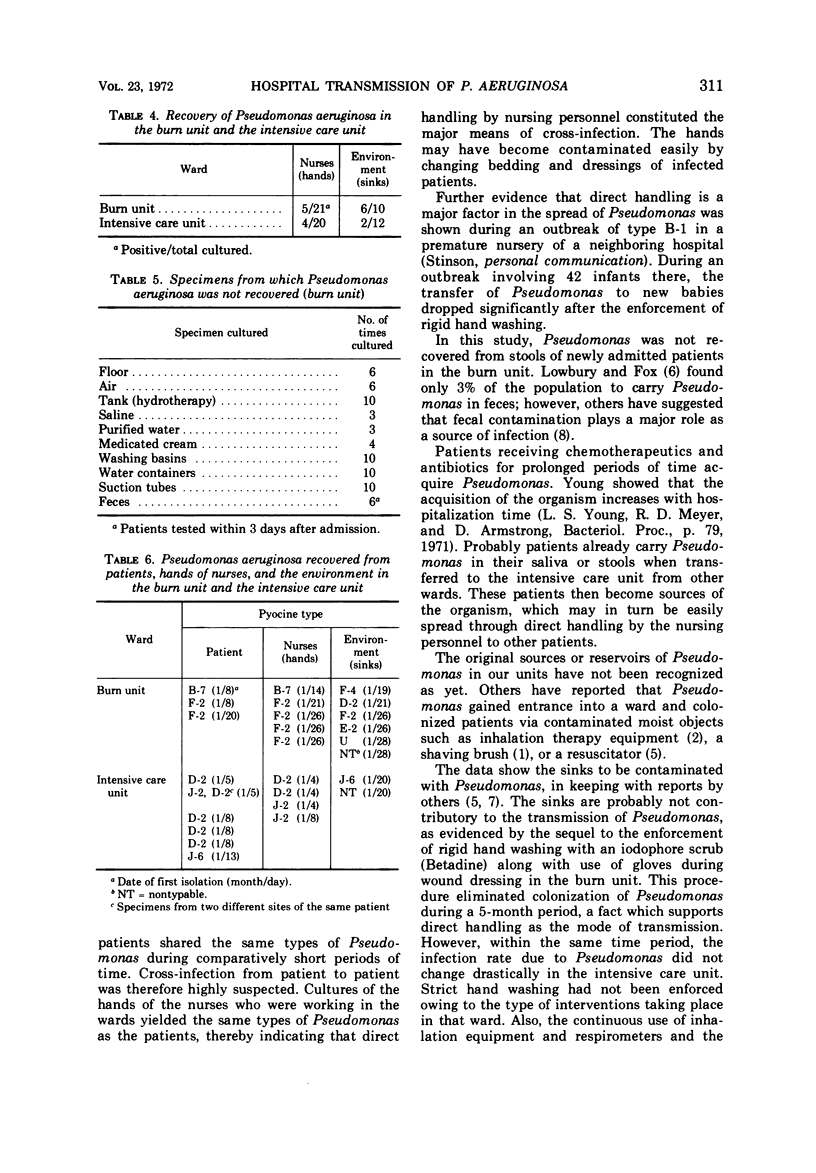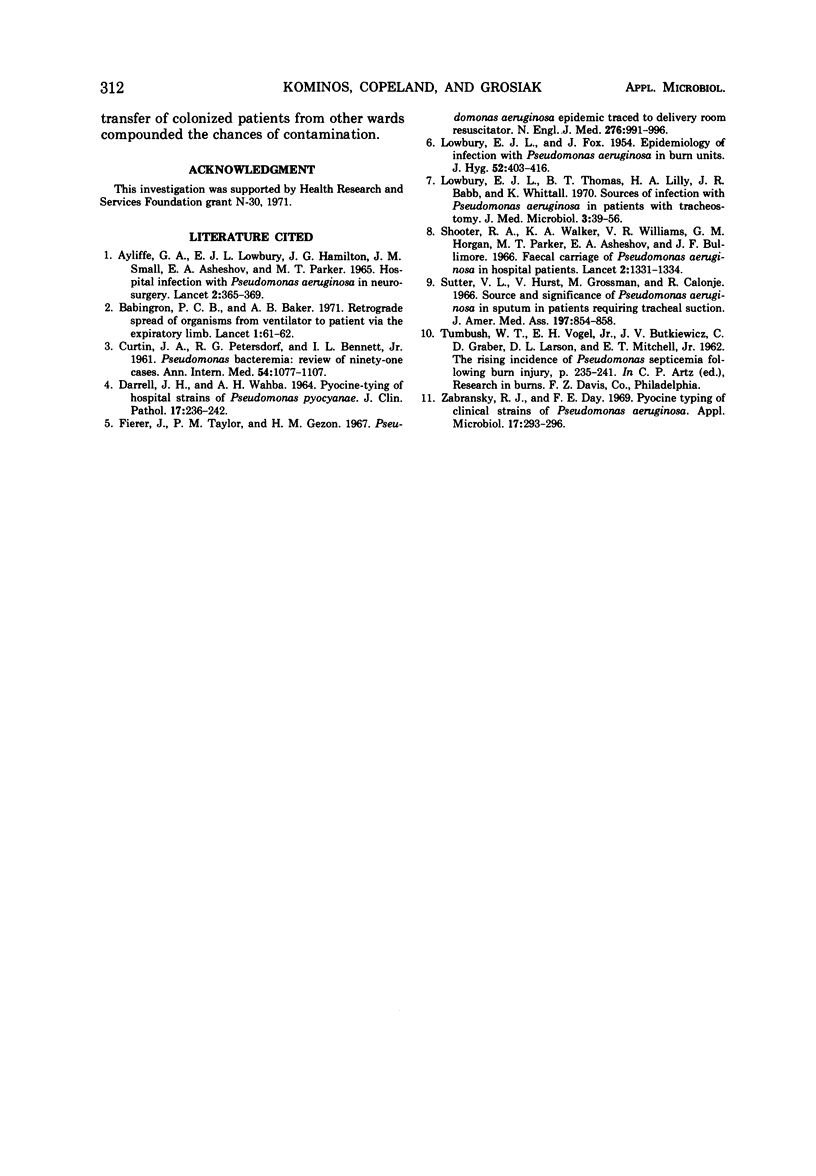Abstract
The transmission of Pseudomonas aeruginosa was studied in the burn unit and the intensive care unit of a 650-bed hospital. There was a tendency among patients in the burn unit to yield more than one type of P. aeruginosa, and several patients shared the same types at a particular point in time, suggesting cross-contamination among patients. Similar observations were made in the intensive care unit. Cultures from the hands of nurses caring for these patients yielded the same types of P. aeruginosa, suggesting the direct handling of patients by the nursing personnel to be the principal mode of transmission.
Full text
PDF



Selected References
These references are in PubMed. This may not be the complete list of references from this article.
- AYLIFFE G. A., LOWBURY E. J., HAMILTON J. G., SMALL J. M., ASHESHOV E. A., PARKER M. T. HOSPITAL INFECTION WITH PSEUDOMONAS AERUGINOSA IN NEUROSURGERY. Lancet. 1965 Aug 21;2(7408):365–368. doi: 10.1016/s0140-6736(65)90343-0. [DOI] [PubMed] [Google Scholar]
- Babington P. C., Baker A. B., Johnston H. H. Retrograde spread of organisms from ventilator to patient via the expiratory limb. Lancet. 1971 Jan 9;1(7689):61–62. doi: 10.1016/s0140-6736(71)90781-1. [DOI] [PubMed] [Google Scholar]
- DARRELL J. H., WAHBA A. H. PYOCINE-TYPING OF HOSPITAL STRAINS OF PSEUDOMONAS PYOCYANEA. J Clin Pathol. 1964 May;17:236–242. doi: 10.1136/jcp.17.3.236. [DOI] [PMC free article] [PubMed] [Google Scholar]
- Fierer J., Taylor P. M., Gezon H. M. Pseudomonas aeruginosa epidemic traced to delivery-room resuscitators. N Engl J Med. 1967 May 4;276(18):991–996. doi: 10.1056/NEJM196705042761801. [DOI] [PubMed] [Google Scholar]
- LOWBURY E. J., FOX J. The epidemiology of infection with Pseudomonas pyocyanea in a burns unit. J Hyg (Lond) 1954 Sep;52(3):403–416. doi: 10.1017/s0022172400027601. [DOI] [PMC free article] [PubMed] [Google Scholar]
- Lowbury E. J., Thom B. T., Lilly H. A., Babb J. R., Whittall K. Sources of infection with Pseudomonas aeruginosa in patients with tracheostomy. J Med Microbiol. 1970 Feb;3(1):39–56. doi: 10.1099/00222615-3-1-39. [DOI] [PubMed] [Google Scholar]
- Shooter R. A., Walker K. A., Williams V. R., Horgan G. M., Parker M. T., Asheshov E. H., Bullimore J. F. Faecal carriage of Pseudomonas aeruginosa in hospital patients. Possible spread from patient to patient. Lancet. 1966 Dec 17;2(7477):1331–1334. doi: 10.1016/s0140-6736(66)92082-4. [DOI] [PubMed] [Google Scholar]
- Sutter V. L., Hurst V., Grossman M., Calonje R. Source and significance of Pseudomonas aeruginosa in sputum. Patients requiring tracheal suction. JAMA. 1966 Sep 12;197(11):854–858. [PubMed] [Google Scholar]
- Zabransky R. J., Day F. E. Pyocine typing of clinical strains of Pseudomonas aeruginosa. Appl Microbiol. 1969 Feb;17(2):293–296. doi: 10.1128/am.17.2.293-296.1969. [DOI] [PMC free article] [PubMed] [Google Scholar]


